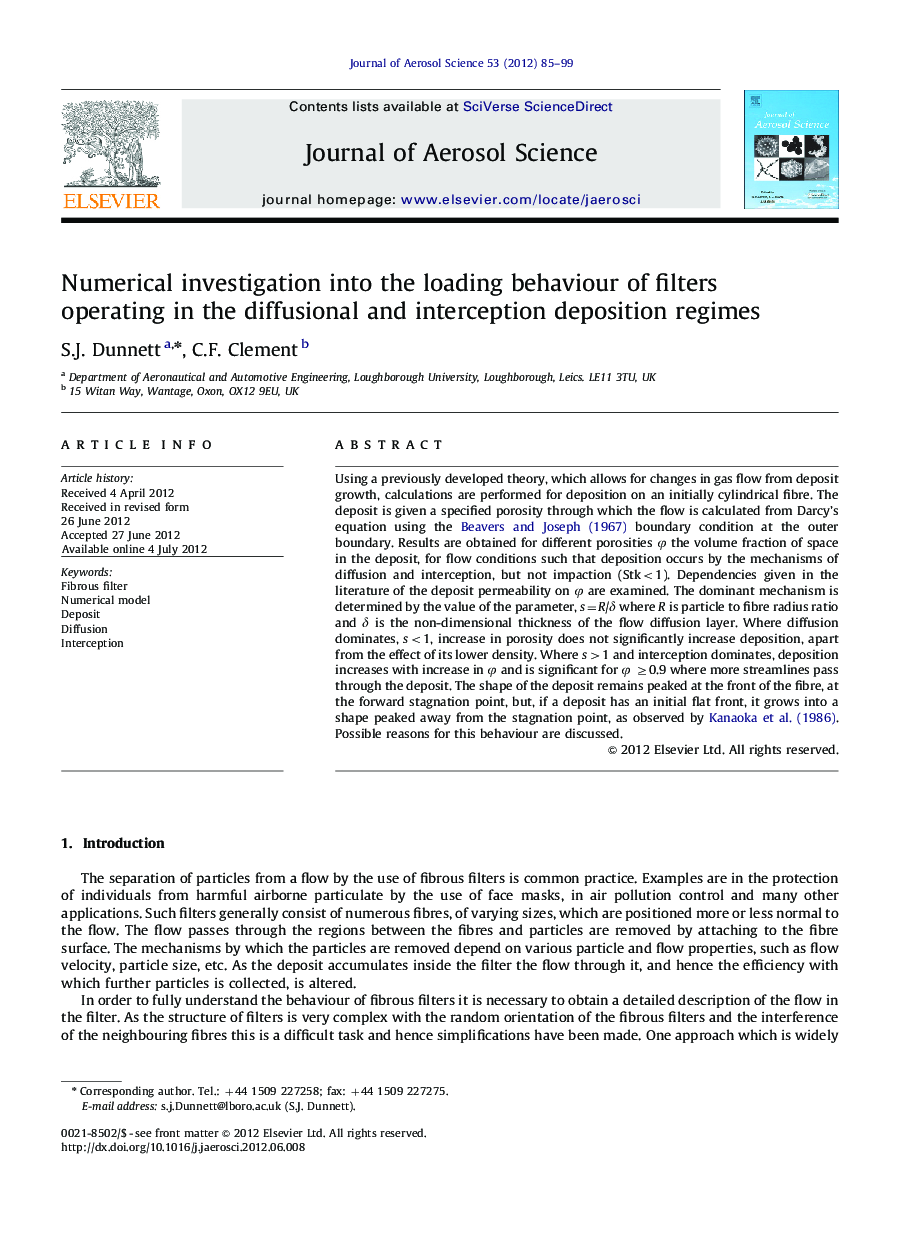| Article ID | Journal | Published Year | Pages | File Type |
|---|---|---|---|---|
| 4452541 | Journal of Aerosol Science | 2012 | 15 Pages |
Using a previously developed theory, which allows for changes in gas flow from deposit growth, calculations are performed for deposition on an initially cylindrical fibre. The deposit is given a specified porosity through which the flow is calculated from Darcy's equation using the Beavers and Joseph (1967) boundary condition at the outer boundary. Results are obtained for different porosities φ the volume fraction of space in the deposit, for flow conditions such that deposition occurs by the mechanisms of diffusion and interception, but not impaction (Stk<1). Dependencies given in the literature of the deposit permeability on φ are examined. The dominant mechanism is determined by the value of the parameter, s=R/δ where R is particle to fibre radius ratio and δ is the non-dimensional thickness of the flow diffusion layer. Where diffusion dominates, s<1, increase in porosity does not significantly increase deposition, apart from the effect of its lower density. Where s>1 and interception dominates, deposition increases with increase in φ and is significant for φ ≥0.9 where more streamlines pass through the deposit. The shape of the deposit remains peaked at the front of the fibre, at the forward stagnation point, but, if a deposit has an initial flat front, it grows into a shape peaked away from the stagnation point, as observed by Kanaoka et al. (1986). Possible reasons for this behaviour are discussed.
► Deposit growth in a fibrous filter is investigated numerically. ► Deposition of particles in the diffusion and interception regimes are considered. ► For diffusion the porosity of the deposit does not affect further deposition. ► For interception deposition increases with an increase in deposit porosity. ► An accurate description of the initial deposit on the fibres is crucial.
